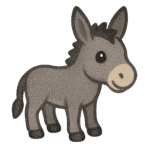More than just learning another language
Illustrated stories is a fun and engaging way to introduce new content after students have gained a basic foundation in Chinese. All stories are original. To further enhance: an audio assistant is always available to support new vocabulary and provide guidance for accurate pronunciation. The visuals not only add an element of enjoyment but also help students better understand and connect with the stories. By combining imagery with sound, this activity keeps learners motivated while deepening comprehension.
This activity is found in the Elephant Jungle




